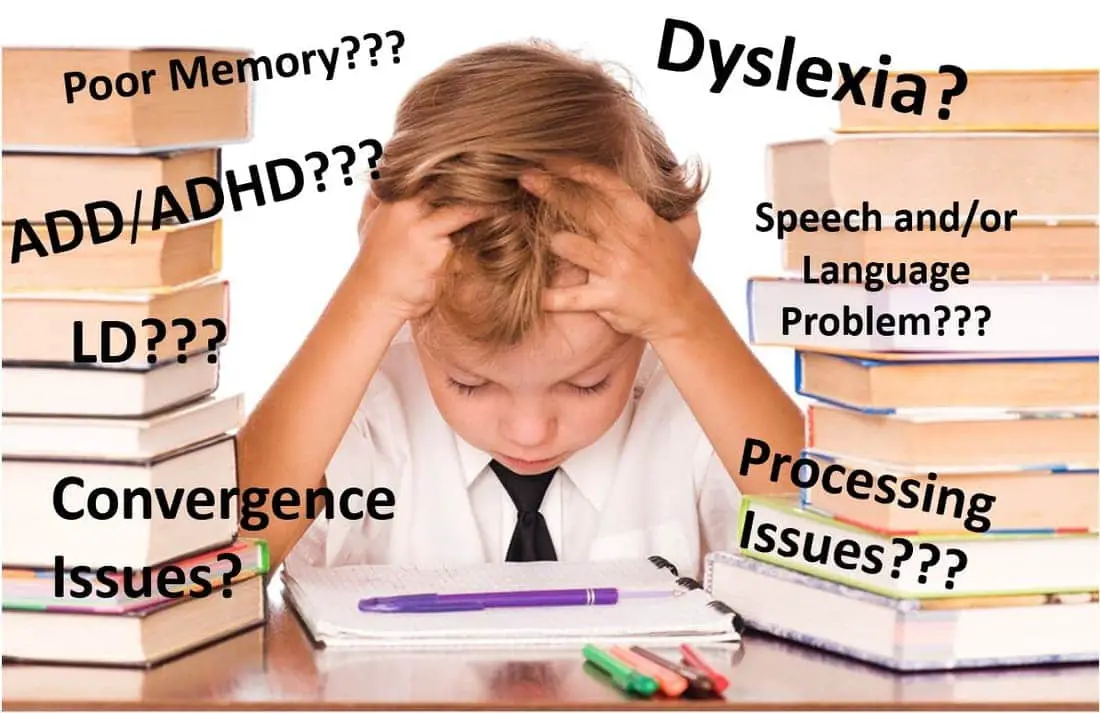Table of Contents
LEARNING DISABILITY
A learning disability (LD) means you have something in your brain that is making it hard for you to learn as much as your whole brain should be able to learn.
OR
A learning disability is a neurological disorder. The person’s brain is wired differently and though he or she may be as smart as anyone else, they have trouble with reading, writing, organizing and remembering
OR
LEARNING ability such as dyslexia affects a person able to do math calculation, to coordinate movements or to direct attention they are usually diagnosed in children ones they start school.
Types of Learning Disabilities
Learning disabilities are neurologically-based processing problems. These processing problems can interfere with learning basic skills such as reading, writing and/or math. They can also interfere with higher-level skills such as organization, time planning, abstract reasoning, long or short term memory and attention. It is important to realize that learning disabilities can affect an individual’s life beyond academics and can impact relationships with family, friends and in the workplace.

How can define learning disability?
Some of the recognized learning disabilities that affect reading (and other things) are deficits in the following:
- Auditory Sequencing – Confusion with the number sequence, lists, or lists of directions. Hearing ninety-four instead of forty-nine.
- Auditory Memory – Difficulty remembering what was heard, difficulty remembering important items from a lecture. Spells poorly.
- Visual Sequencing – Problems in using a separate answer sheet. Loses place easily. Problems with reading. Reversing or misreading numbers of letters. Reading words incorrectly. Difficulty with equations.
- Visual Memory – Difficulty remembering what was seen. Reading comprehension. Difficulty with math equations. Poor recall of information.
- Dysgraphia – Inability to form letters correctly. students cannot read their own writing.
- Visual-Motor Integration – Mechanical problems in test-taking. Difficulty copying from board or book. Spaces poorly. Poorly written work. Unorganized.
- Non-verbal learning disability is a neurological disorder that originates in the right hemisphere of the brain, causing problems with visual-spatial perception, intuitive, organizational, evaluative, and holistic processing functions.
- Auditory Figure-Ground – Trouble hearing sounds over background noises.
- Visual Figure-Ground – Trouble seeing an image within a competing background. Picking one line of print from another while reading.
- Visual Discrimination – Seeing the difference between two similar objects
- Spatial Orientation – Loses materials. Late to class. Difficulty with oral reading. Unorganized homework. Difficulty judging time.
- Expressive Language – Difficulty expressing themselves. Difficulty with accessing stored information and turning it into language.
- Receptive Language – Appears to be “not listening”. Does not respond promptly to cues. Does not understand long sentences or 3 step directions.
ADHD is marked by poor impulse control, difficulty with organization, hyperactivity, inability to sustain attention while reading or listening. However, many times students with learning disabilities seem to have ADHD, but it is really due to some of the above issues. Learning disabilities should not be confused with learning problems which are primarily the result of visual, hearing, or motor handicaps; of mental retardation; of emotional disturbance; or of environmental, cultural or economic disadvantages.
Generally speaking, people with learning disabilities are of average or above-average intelligence. There often appears to be a gap between the individual’s potential and actual achievement. This is why learning disabilities are referred to as “hidden disabilities”: the person looks perfectly “normal” and seems to be a very bright and intelligent person, yet may be unable to demonstrate the skill level expected from someone of a similar age.
A learning disability cannot be cured or fixed; it is a lifelong challenge. However, with appropriate support and intervention, people with learning disabilities can achieve success in school, at work, in relationships, and in the community. “Learning Disabilities” is an “umbrella” term describing a number of other, more specific learning disabilities, such as dyslexia and dysgraphia.
Information:
The purpose of our website is only to help students to assist them in finding the best suitable instrument for their research especially in Pakistan where students waste a lot of time in search of the instruments. It is totally free of cost and only for creating awareness and assisting students and researchers for good researches. Moreover, it is necessary for you to take the permission of scales from their representative authors before use because copyrights are reserved by the respected authors.
Help Us Improve This Article
Did you find an inaccuracy? We work hard to provide accurate and scientifically reliable information. If you have found an error of any kind, please let us know.
Add comment. we appropriate your effort.
If you have any scale or any material related to psychology kindly share it with us at psychologyroots@gmail.com. We help others on behalf of you.
Follow